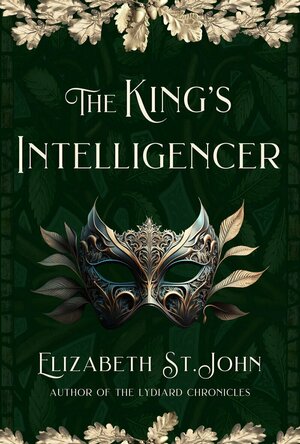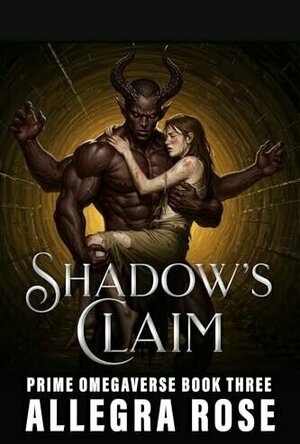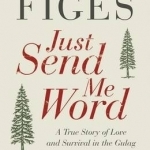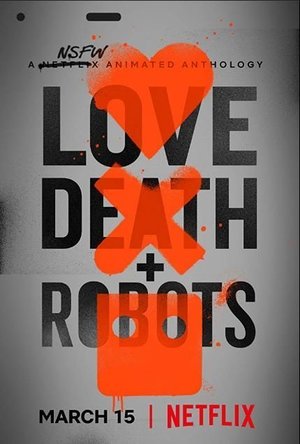Search
Merissa (13508 KP) rated Unlike Any Other by Ed Londergan in Books
May 18, 2022 (Updated Jun 19, 2023)
UNLIKE ANY OTHER is the story of Bathsheba Spooner, the first woman to be executed in the new United States of America. You find out, through her eyes, what it was like to live a life of privilege, to be passed on in an arranged marriage, to have all her hopes and dreams dashed, to a point where murder is the only way out.
Bathsheba was brought up to speak her mind, to be strong-spirited. She had dreams of marrying a wealthy man from Boston and joining Society. So when she finds out her father has arranged a marriage to a local merchant, she's not happy but eventually agrees to it. Her marriage isn't a happy one, with Joshua frequenting the local taverns more than he does his home. That doesn't stop him from his conjugal rights though. When a young man, half of Bathsheba's age, stays at their home to recover from an illness, she feels the stirrings of desire she hasn't felt for a long time.
This was a well-written piece of history that I thoroughly enjoyed. I found out more about what it was like for the people of America at that time, as well as the Boston Tea Party! Bathsheba's options were so limited at a time when a woman's rights were close to zero. I do wonder why she didn't contact her brother but, at a time when the war was dividing families, I guess I'm not 100% surprised.
I would have liked to have heard a little from Ezra Ross but maybe there isn't enough written from his account to tell his story.
A historical fiction based on a true story that I have no hesitation in recommending.
** same worded review will appear elsewhere **
* A copy of this book was provided to me with no requirements for a review. I voluntarily read this book, and the comments here are my honest opinion. *
Merissa
Archaeolibrarian - I Dig Good Books!
May 12, 2022
Bathsheba was brought up to speak her mind, to be strong-spirited. She had dreams of marrying a wealthy man from Boston and joining Society. So when she finds out her father has arranged a marriage to a local merchant, she's not happy but eventually agrees to it. Her marriage isn't a happy one, with Joshua frequenting the local taverns more than he does his home. That doesn't stop him from his conjugal rights though. When a young man, half of Bathsheba's age, stays at their home to recover from an illness, she feels the stirrings of desire she hasn't felt for a long time.
This was a well-written piece of history that I thoroughly enjoyed. I found out more about what it was like for the people of America at that time, as well as the Boston Tea Party! Bathsheba's options were so limited at a time when a woman's rights were close to zero. I do wonder why she didn't contact her brother but, at a time when the war was dividing families, I guess I'm not 100% surprised.
I would have liked to have heard a little from Ezra Ross but maybe there isn't enough written from his account to tell his story.
A historical fiction based on a true story that I have no hesitation in recommending.
** same worded review will appear elsewhere **
* A copy of this book was provided to me with no requirements for a review. I voluntarily read this book, and the comments here are my honest opinion. *
Merissa
Archaeolibrarian - I Dig Good Books!
May 12, 2022

The King's Intelligencer: The Discovery of the Missing Princes in the Tower
Book
London, 1674: When children’s bones are unexpectedly unearthed in the Tower of London, England’s...
Historical Fiction Mystery

Shadow's Claim (Prime Omegaverse #3)
Book
She hid in shadows to survive. Now she belongs to one. For three years, Nova has played a...
Dub Con Omegaverse Fantasy Science Fiction Dark Romance Monster Romance
Phillip McSween (751 KP) rated Live Die Repeat: Edge of Tomorrow (2014) in Movies
Jun 5, 2019
Hits You From Jump and Keeps Rolling
Major William Cage (Tom Cruise) finds himself thrust into a war he wanted no part of against an enemy that gains the advantage by rewinding time. After he gains their power, he has to figure out a way to stop them and end their terror for good.
Acting: 10
Beginning: 10
Edge of Tomorrow grabs your attention from the opening credits. The screen starts to crackle and break up as we’re placed right in the middle of a number of news reports describing the current situation. It’s a clever way to get you caught up to speed without starting slow.
Characters: 10
Cinematography/Visuals: 10
Science fiction movies and war movies have some of the greatest cinematic scenes in film history. You combine the two genres and you’re left with pure gold. Edge of Tomorrow has a way of capturing grit, ugliness, and beauty at the same time. As you’re watching the alien creatures tear through things like it’s paper, you’re also marveling at everything director Doug Liman is capturing on the screen at once. It was a pleasure watching the mech suits in action, a mixture of old-school tech and advanced weaponry. The attention to detail throughout is to be applauded. The aliens alone are incredibly creative and intriguing to see on the battlefield.
Conflict: 10
Oftentimes, when I watch a film like this, I wonder how they’re able to still squeeze a story in when there is so much action. The battles are consistent and take you across a number of different landscapes as Cage has to keep reliving the day. It’s seriously badass once Cage has started to perfect the day enough where he’s killing the enemy left and right.
Although the action is amazing, that isn’t the sole thing carrying the conflict as Cage and Rita Vrataski (Emily Blunt) are trying to figure out what exactly they need to do bring the nightmare to an end. They are at ends throughout the movie, even to the point where Cage wants to throw in the towel a number of times. It feels very real.
Genre: 10
Memorability: 10
Pace: 10
Plot: 10
Very solid storyline that manages to stay out of its own way by not overcomplicating things. I appreciated the fact that the screenwriters (and there are multiple) didn’t try and cut any corners, but looked for proper ways to advance the story. And that ending…
Resolution: 10
Just perfect. Ends right were it needs to with you wanting more, but knowing you don’t really need it. The closure is spot on. Well done.
Overall: 10
Chalk one up for the blockbusters, Edge of Tomorrow stands on my Top Ten list all-time as of today. It keeps you guessing, but most importantly, it keeps you entertained. I won’t apologize for the high rating as this film checks all the boxes.
Acting: 10
Beginning: 10
Edge of Tomorrow grabs your attention from the opening credits. The screen starts to crackle and break up as we’re placed right in the middle of a number of news reports describing the current situation. It’s a clever way to get you caught up to speed without starting slow.
Characters: 10
Cinematography/Visuals: 10
Science fiction movies and war movies have some of the greatest cinematic scenes in film history. You combine the two genres and you’re left with pure gold. Edge of Tomorrow has a way of capturing grit, ugliness, and beauty at the same time. As you’re watching the alien creatures tear through things like it’s paper, you’re also marveling at everything director Doug Liman is capturing on the screen at once. It was a pleasure watching the mech suits in action, a mixture of old-school tech and advanced weaponry. The attention to detail throughout is to be applauded. The aliens alone are incredibly creative and intriguing to see on the battlefield.
Conflict: 10
Oftentimes, when I watch a film like this, I wonder how they’re able to still squeeze a story in when there is so much action. The battles are consistent and take you across a number of different landscapes as Cage has to keep reliving the day. It’s seriously badass once Cage has started to perfect the day enough where he’s killing the enemy left and right.
Although the action is amazing, that isn’t the sole thing carrying the conflict as Cage and Rita Vrataski (Emily Blunt) are trying to figure out what exactly they need to do bring the nightmare to an end. They are at ends throughout the movie, even to the point where Cage wants to throw in the towel a number of times. It feels very real.
Genre: 10
Memorability: 10
Pace: 10
Plot: 10
Very solid storyline that manages to stay out of its own way by not overcomplicating things. I appreciated the fact that the screenwriters (and there are multiple) didn’t try and cut any corners, but looked for proper ways to advance the story. And that ending…
Resolution: 10
Just perfect. Ends right were it needs to with you wanting more, but knowing you don’t really need it. The closure is spot on. Well done.
Overall: 10
Chalk one up for the blockbusters, Edge of Tomorrow stands on my Top Ten list all-time as of today. It keeps you guessing, but most importantly, it keeps you entertained. I won’t apologize for the high rating as this film checks all the boxes.

Just Send Me Word: A True Story of Love and Survival in the Gulag
Book
From Orlando Figes, international bestselling author of A People's Tragedy, Just Send Me Word is the...
Movie Metropolis (309 KP) rated Sausage Party (2016) in Movies
Jun 11, 2019
Utterly Ridiculous
Just when Sharknado: the 4th Awakens made you think film-making couldn’t get any more ridiculous, a movie like Sausage Party comes along to remind you that Hollywood can always go that one step further to mind-boggling peculiarity.
Of course, that’s not always a bad thing, there have been countless weird and wacky films over the years that have gone on to become cult classics – look at Kick-Ass or even Pulp Fiction for examples of that. But for every Pulp Fiction there’s a Sharknado. So is Sausage Party good weird or as stale as a month-old bagel?
From the mind of Seth Rogen, Sausage Party is a strictly adults only animation that combines hugely offensive language and racial stereotypes with surprisingly meaningful religious undertones. And do you know what? It’s a breath of fresh air.
Life is good for all the food items that occupy the shelves at the local supermarket. Frank (Seth Rogen) the sausage, Brenda (Kristen Wiig) the hot dog bun, Teresa Taco and Sammy Bagel Jr. (Edward Norton) can’t wait to go home with a happy customer. Soon, their world comes crashing down as poor Frank learns the horrifying truth that he will eventually become a meal. After warning his pals about their similar fate, the panicked perishables devise a plan to escape from their human enemies.
Directors Conrad Vernon and Greg Tiernan take Rogen’s intriguing premise and inject a warmly familiar animation style, distancing itself just enough to make any comparisons simply inconceivable. Sausage Party is like nothing you will have ever seen.
The voice-acting is great too. Rogen plays his usual film staple – in sausage form – with the spicy Salma Hayek outdoing everyone else as a lustful taco. Kristen Wiig, Bill Hader, Michael Cera and Jonah Hill also lend their familiar voices to a hot-dog bun, a bottle of spirit and two other frankfurters respectively.
Elsewhere, the comedy, for the most part, hits the spot. As dreadful as it sounds, the racial stereotyping works incredibly well in food form. British tea, Mexican taco shells and German sauerkraut will have you rolling about the aisles with their outrageous vulgarity, but everyone needs to release their inner teenager once in a while.
Unfortunately, the films standout sequence has already been shown in the trailer – a side-splitting food-eye view of a normal kitchen, before every edible item is butchered; that poor Irish potato didn’t stand a chance. This is a real shame as the rest of the film doesn’t quite match up to the standard of that scene.
Nevertheless, there’ll be chuckles throughout as numerous celebrities are parodied in food form. One in particular, immortalised in chewing gum, is incredibly well thought out.
And that’s where Sausage Party succeeds the most. Underneath the polished animation and crude humour, this film is actually kind of clever. It tackles religion, war, race, sexuality and food waste very well indeed and that’s something the genre doesn’t ask for. It’s just unfortunate that it’s not quite as funny as the trailer would have you believe.
https://moviemetropolis.net/2016/09/03/utterly-ridiculous-sausage-party-review/
Of course, that’s not always a bad thing, there have been countless weird and wacky films over the years that have gone on to become cult classics – look at Kick-Ass or even Pulp Fiction for examples of that. But for every Pulp Fiction there’s a Sharknado. So is Sausage Party good weird or as stale as a month-old bagel?
From the mind of Seth Rogen, Sausage Party is a strictly adults only animation that combines hugely offensive language and racial stereotypes with surprisingly meaningful religious undertones. And do you know what? It’s a breath of fresh air.
Life is good for all the food items that occupy the shelves at the local supermarket. Frank (Seth Rogen) the sausage, Brenda (Kristen Wiig) the hot dog bun, Teresa Taco and Sammy Bagel Jr. (Edward Norton) can’t wait to go home with a happy customer. Soon, their world comes crashing down as poor Frank learns the horrifying truth that he will eventually become a meal. After warning his pals about their similar fate, the panicked perishables devise a plan to escape from their human enemies.
Directors Conrad Vernon and Greg Tiernan take Rogen’s intriguing premise and inject a warmly familiar animation style, distancing itself just enough to make any comparisons simply inconceivable. Sausage Party is like nothing you will have ever seen.
The voice-acting is great too. Rogen plays his usual film staple – in sausage form – with the spicy Salma Hayek outdoing everyone else as a lustful taco. Kristen Wiig, Bill Hader, Michael Cera and Jonah Hill also lend their familiar voices to a hot-dog bun, a bottle of spirit and two other frankfurters respectively.
Elsewhere, the comedy, for the most part, hits the spot. As dreadful as it sounds, the racial stereotyping works incredibly well in food form. British tea, Mexican taco shells and German sauerkraut will have you rolling about the aisles with their outrageous vulgarity, but everyone needs to release their inner teenager once in a while.
Unfortunately, the films standout sequence has already been shown in the trailer – a side-splitting food-eye view of a normal kitchen, before every edible item is butchered; that poor Irish potato didn’t stand a chance. This is a real shame as the rest of the film doesn’t quite match up to the standard of that scene.
Nevertheless, there’ll be chuckles throughout as numerous celebrities are parodied in food form. One in particular, immortalised in chewing gum, is incredibly well thought out.
And that’s where Sausage Party succeeds the most. Underneath the polished animation and crude humour, this film is actually kind of clever. It tackles religion, war, race, sexuality and food waste very well indeed and that’s something the genre doesn’t ask for. It’s just unfortunate that it’s not quite as funny as the trailer would have you believe.
https://moviemetropolis.net/2016/09/03/utterly-ridiculous-sausage-party-review/
Hazel (1853 KP) rated Cuckoo Song in Books
Dec 14, 2018
<i>I received this book for free through Goodreads First Reads.</i>
Frances Hardinge’s <i>Cuckoo Song</i> is a historical, horror story for children. Six years have past since the end of the First World War, a war in which the Crescent family lost their eldest child. Eleven-year-old Theresa Crescent “Triss” lives with her parents and nine year old sister, Penelope “Pen” in the fictional town of Ellchester, England. Since losing Sebastian, Triss has become a very frail child and so it is no surprise to her parents that she develops an awful fever after falling into a millpond. The question, though, is how she came to be in the pond to begin with and why Pen is so scared of her?
Things become even more mystifying when Triss sees dolls start to move, finds leaves on her pillow, and is constantly ravenously hungry. Her parents begin to consider that Triss is suffering from some form of mental illness, however, Pen, the bad-tempered child, is adamant that that is not the case. She claims that Triss is a fake.
The horrible realization is that perhaps Triss is not Triss at all. This discovery leads the tale into paranormal territory with the introduction of unique new creatures: Besiders.
Cuckoo Song is not just an entertaining, fantastical story; it also deals with themes of family and personal emotion. Piers and Celeste Crescent are examples of parents whose behaviour and response to the death of a child impact on their remaining children. Triss becomes a child they want to protect and save leaving Pen to become an attention-seeking troublemaker.
As the story progresses, Triss and Pen’s relationship develops, or rather Pen and Not-Triss’, into something more recognizable and sisterly. Through their strength and newfound love for each other, they fight to get the happy ending they deserve. And through it all Triss discovers that just because someone calls you a monster, it does not mean that you are a monster.
The 1920’s setting did not feel quite accurate. At times it felt as though the story could have been set today. This, however, was not a major issue as, apart from Sebastian’s death during WW1, the time period was not a key aspect of the plot.
Initially the children, particularly Pen, were written in a way that made them seem older than Hardinge intended them to be, although by the end it is clear that they are fairly young. This is shown in the way that Pen begins to become attached to, and slightly more dependent, on Triss.
It is difficult to say who the target audience of <i>Cuckoo Song</i> is. The protagonist is eleven but the writing may be a little difficult for some children, on the other hand it cannot exactly be classed as Young Adult fiction since the characters are not even in their teens.
Overall, <i>Cuckoo Song</i> is an exciting, fast paced, fairy tale-like story with original characters. It is not scary and is fun to read; there is nothing to stop older readers from enjoying it too!
Frances Hardinge’s <i>Cuckoo Song</i> is a historical, horror story for children. Six years have past since the end of the First World War, a war in which the Crescent family lost their eldest child. Eleven-year-old Theresa Crescent “Triss” lives with her parents and nine year old sister, Penelope “Pen” in the fictional town of Ellchester, England. Since losing Sebastian, Triss has become a very frail child and so it is no surprise to her parents that she develops an awful fever after falling into a millpond. The question, though, is how she came to be in the pond to begin with and why Pen is so scared of her?
Things become even more mystifying when Triss sees dolls start to move, finds leaves on her pillow, and is constantly ravenously hungry. Her parents begin to consider that Triss is suffering from some form of mental illness, however, Pen, the bad-tempered child, is adamant that that is not the case. She claims that Triss is a fake.
The horrible realization is that perhaps Triss is not Triss at all. This discovery leads the tale into paranormal territory with the introduction of unique new creatures: Besiders.
Cuckoo Song is not just an entertaining, fantastical story; it also deals with themes of family and personal emotion. Piers and Celeste Crescent are examples of parents whose behaviour and response to the death of a child impact on their remaining children. Triss becomes a child they want to protect and save leaving Pen to become an attention-seeking troublemaker.
As the story progresses, Triss and Pen’s relationship develops, or rather Pen and Not-Triss’, into something more recognizable and sisterly. Through their strength and newfound love for each other, they fight to get the happy ending they deserve. And through it all Triss discovers that just because someone calls you a monster, it does not mean that you are a monster.
The 1920’s setting did not feel quite accurate. At times it felt as though the story could have been set today. This, however, was not a major issue as, apart from Sebastian’s death during WW1, the time period was not a key aspect of the plot.
Initially the children, particularly Pen, were written in a way that made them seem older than Hardinge intended them to be, although by the end it is clear that they are fairly young. This is shown in the way that Pen begins to become attached to, and slightly more dependent, on Triss.
It is difficult to say who the target audience of <i>Cuckoo Song</i> is. The protagonist is eleven but the writing may be a little difficult for some children, on the other hand it cannot exactly be classed as Young Adult fiction since the characters are not even in their teens.
Overall, <i>Cuckoo Song</i> is an exciting, fast paced, fairy tale-like story with original characters. It is not scary and is fun to read; there is nothing to stop older readers from enjoying it too!
Sophia (Bookwyrming Thoughts) (530 KP) rated In The Shadow of Blackbirds in Books
Jan 23, 2020
I had this random tendency to not write a review, at all, for Cat Winters' <i>In the Shadow of Blackbirds</i>, to which the copy at the library had an extremely sucky synopsis (though the design IS pretty):
In a city filled with the dead and dying,
while a nightmarish war rages halfway across the world,
the grieving look for answers in photographs and séances.
It's 1918. San Diego.
And a girl who doesn't believe in spirits
steps off the train and into a new life...
Apparently the one sentence synopsis provided by the publisher (yes, I read those) is a lot more helpful than this inside jacket cover synopsis, which gives a the book a mysterious aura that separates it from the other 2015-2016 Gateway Award Nominees.
The book, albeit a fantastically creepy concept, apparently goes from one end of the spectrum to the other end of the spectrum by the end of the book.
The so-called beginning of the spectrum I'm speaking of is the absolute, complete paranoia of the time period. Literally all of the characters depicted throughout the book was highly addicted to onions, spirit photography, or shunning the Germans. Of course, the more historical fiction and actual historical texts I read of World War I, I sometimes find it highly hilarious mainly due to the simple fact that Americans actually came from Europe and the majority of them have German blood (okay, a lot of ya'll have European blood). Funny how that actually works.
The only characters that I actually liked was Mary Shelley Black (thankfully the main character) and Stephen Embers (or rather, Live Stephen and not Dead Stephen, who actually spent a good few times squishing Mary Shelley). Both Mary Shelley and Stephen were more "adventurous" (logic and science) and tended to stray from the rest of the pack. On the unfortunate side... dear old Stephen Embers is apparently dead, which eventually results in the book being one of your typical ghost stories/shows where the dead have unfinished business.
However, in Stephen's case, all Mary Shelley seems to get from him is something about blackbirds - blackbirds attacking him.
The other end of the spectrum, as the book continues and Mary Shelley gets closer to finding out Stephen's "unfinished" business, is apparently the book going from the main character being the most logical and unparanoid one to being one of the paranoid ones. She goes from being one of the logical ones who reasons and questions everything to someone who "freaked" out over a cough or "drowning" herself in onions. Onions are apparently the garlic of the book while the vampire is the influenza.
Simply put, <i>In the Shadow of Blackbirds</i> started to become a little bit too "insane" for my taste and for me to handle at certain points until the very end. Cat Winters' debut novel was a chilling read that left me walking away feeling mainly satisfied with how Stephen and Mary Shelley eventually come to terms with their relationship.
<a href="https://bookwyrmingthoughts.com/review-in-the-shadow-of-blackbirds-by-cat-winters/"; target="_blank">This review was originally posted on Bookwyrming Thoughts</a>
In a city filled with the dead and dying,
while a nightmarish war rages halfway across the world,
the grieving look for answers in photographs and séances.
It's 1918. San Diego.
And a girl who doesn't believe in spirits
steps off the train and into a new life...
Apparently the one sentence synopsis provided by the publisher (yes, I read those) is a lot more helpful than this inside jacket cover synopsis, which gives a the book a mysterious aura that separates it from the other 2015-2016 Gateway Award Nominees.
The book, albeit a fantastically creepy concept, apparently goes from one end of the spectrum to the other end of the spectrum by the end of the book.
The so-called beginning of the spectrum I'm speaking of is the absolute, complete paranoia of the time period. Literally all of the characters depicted throughout the book was highly addicted to onions, spirit photography, or shunning the Germans. Of course, the more historical fiction and actual historical texts I read of World War I, I sometimes find it highly hilarious mainly due to the simple fact that Americans actually came from Europe and the majority of them have German blood (okay, a lot of ya'll have European blood). Funny how that actually works.
The only characters that I actually liked was Mary Shelley Black (thankfully the main character) and Stephen Embers (or rather, Live Stephen and not Dead Stephen, who actually spent a good few times squishing Mary Shelley). Both Mary Shelley and Stephen were more "adventurous" (logic and science) and tended to stray from the rest of the pack. On the unfortunate side... dear old Stephen Embers is apparently dead, which eventually results in the book being one of your typical ghost stories/shows where the dead have unfinished business.
However, in Stephen's case, all Mary Shelley seems to get from him is something about blackbirds - blackbirds attacking him.
The other end of the spectrum, as the book continues and Mary Shelley gets closer to finding out Stephen's "unfinished" business, is apparently the book going from the main character being the most logical and unparanoid one to being one of the paranoid ones. She goes from being one of the logical ones who reasons and questions everything to someone who "freaked" out over a cough or "drowning" herself in onions. Onions are apparently the garlic of the book while the vampire is the influenza.
Simply put, <i>In the Shadow of Blackbirds</i> started to become a little bit too "insane" for my taste and for me to handle at certain points until the very end. Cat Winters' debut novel was a chilling read that left me walking away feeling mainly satisfied with how Stephen and Mary Shelley eventually come to terms with their relationship.
<a href="https://bookwyrmingthoughts.com/review-in-the-shadow-of-blackbirds-by-cat-winters/"; target="_blank">This review was originally posted on Bookwyrming Thoughts</a>
RəX Regent (349 KP) rated Godzilla (1954) in Movies
Feb 25, 2019
The beginning was inspired...
Contains spoilers, click to show
I was first introduced to Godzilla in cartoon form in the 1980′s as a child, but it wasn't until 1998, with Roland Emmerich's blockbuster reboot that I had seen the infamous beast on the pearl screen. I had also seem bits and bobs of the many original sequels as a child and they had made absolutely no impact on me what so ever! But I became aware of the significance of this, the original, only recently and it was due to this discovery that I hunted down the best copy available.
I ended up with the 2005 Region 1 release, which also includes the U.S. reworking from 1956, Godzilla: King Of The Monsters!. I could not have imagined that a the 1954 version of Godzilla, or more literally, Gojira, could have been so mature, so sombre, or so tempered with its sledgehammer philosophising. Produced just nine years after the devastating nuclear bombings of Hiroshima and Nagasaki, which effectively ended the Second World War, Gojira takes up the mantle on doing what Science Fiction does best, and created the cypher in the form of Godzilla, to represent the devastation left over from the nuking of these cities.
Godzilla is a nuclear beast, affected by U.S. nuclear tests and is now toxically radioactive and upon landfall on Tokyo, rains down, literally, nuclear destruction up on the city, in a manner not dissimilar too that levied upon either of the cities, Hiroshima or Nagasaki. But its not just about that. It about the creation of the next WMD which would ultimately be used against Godzilla but poses and moral dilemma that Robert Oppenheimer himself would appreciate, as to whether such a creation should be allowed to be developed. It also looks quite seriously into establishing the potential evolution of a creature such as Godzilla and uses plausible palaeontological arguments to justify his existence.
The pacing was good and though Godzilla strikes from almost the opening frame, there is a sense of an ongoing crisis rather than an impending apocalypse, with news outlets reporting throughout as plans, both military and civilian are sited.
All in all, this is not just the birth of the massive and largely corny and cheap Godzilla series, it is a striking, intelligent, moving and incredibly well judged masterpiece of 50′s cinema. But I should have known. Most rubbish franchises began with an inspired first movie, something to break the mould and this does the job perfectly.
But it isn't without its flaws. The special effects, though not all bad, are below par even for the time, but effective as for telling the story, some were very good with ALL being well conceived and ambitious. Some were very poor though, such as the model ships, which were unnecessarily below the standards and look like bath toys. But the cinematography was wonderful, with Honda shooting this in a classically manner. Tension was built brilliantly and the action rose to several crescendos and the excellent score by Akira Ifukube was not overused but brought to perfect effect when needed.
The acting was first-rate as well, proving Japanese cinemas reputation. But this was my first real foray into Japanese cinema, and what a treat it was. Many would look at this and see a cheap old film and others will see a film that whist let down by some less that brilliant visual effects and the fact that a lot of people, certainly in the U.K. find subtitles difficult, as a masterpiece not only of Eastern cinema but of cinema full stop. Truly realising its narrative and spirit, its cause and message. This was about a county in mourning not only for the hundreds of thousands lost by Fat Man and Little Boy, but for the war full stop. The 1950′s were a time of great political fear and reconstruction after WW2, and this is a film which taps into the brewing Cold War and fear of annihilation from human behemoths which once released can never be returned.
HIGHLY recommended but not for children as they will bore, miss the point, get put off by the subtitles, black and white and quite frankly its a mature and bleak film and not the 1998 remake. And thank God or Godzilla for that!
I ended up with the 2005 Region 1 release, which also includes the U.S. reworking from 1956, Godzilla: King Of The Monsters!. I could not have imagined that a the 1954 version of Godzilla, or more literally, Gojira, could have been so mature, so sombre, or so tempered with its sledgehammer philosophising. Produced just nine years after the devastating nuclear bombings of Hiroshima and Nagasaki, which effectively ended the Second World War, Gojira takes up the mantle on doing what Science Fiction does best, and created the cypher in the form of Godzilla, to represent the devastation left over from the nuking of these cities.
Godzilla is a nuclear beast, affected by U.S. nuclear tests and is now toxically radioactive and upon landfall on Tokyo, rains down, literally, nuclear destruction up on the city, in a manner not dissimilar too that levied upon either of the cities, Hiroshima or Nagasaki. But its not just about that. It about the creation of the next WMD which would ultimately be used against Godzilla but poses and moral dilemma that Robert Oppenheimer himself would appreciate, as to whether such a creation should be allowed to be developed. It also looks quite seriously into establishing the potential evolution of a creature such as Godzilla and uses plausible palaeontological arguments to justify his existence.
The pacing was good and though Godzilla strikes from almost the opening frame, there is a sense of an ongoing crisis rather than an impending apocalypse, with news outlets reporting throughout as plans, both military and civilian are sited.
All in all, this is not just the birth of the massive and largely corny and cheap Godzilla series, it is a striking, intelligent, moving and incredibly well judged masterpiece of 50′s cinema. But I should have known. Most rubbish franchises began with an inspired first movie, something to break the mould and this does the job perfectly.
But it isn't without its flaws. The special effects, though not all bad, are below par even for the time, but effective as for telling the story, some were very good with ALL being well conceived and ambitious. Some were very poor though, such as the model ships, which were unnecessarily below the standards and look like bath toys. But the cinematography was wonderful, with Honda shooting this in a classically manner. Tension was built brilliantly and the action rose to several crescendos and the excellent score by Akira Ifukube was not overused but brought to perfect effect when needed.
The acting was first-rate as well, proving Japanese cinemas reputation. But this was my first real foray into Japanese cinema, and what a treat it was. Many would look at this and see a cheap old film and others will see a film that whist let down by some less that brilliant visual effects and the fact that a lot of people, certainly in the U.K. find subtitles difficult, as a masterpiece not only of Eastern cinema but of cinema full stop. Truly realising its narrative and spirit, its cause and message. This was about a county in mourning not only for the hundreds of thousands lost by Fat Man and Little Boy, but for the war full stop. The 1950′s were a time of great political fear and reconstruction after WW2, and this is a film which taps into the brewing Cold War and fear of annihilation from human behemoths which once released can never be returned.
HIGHLY recommended but not for children as they will bore, miss the point, get put off by the subtitles, black and white and quite frankly its a mature and bleak film and not the 1998 remake. And thank God or Godzilla for that!
Charlie Cobra Reviews (1840 KP) rated Love, Death & Robots in TV
Jul 7, 2020
Unique And Visceral Experience
Love, Death, & Robots is an adult animated anthology tv series on Netflix. The series is produced by Joshua Donen, David Fincher, Jennifer Miller, and Tim Miller. Each of the 18 episodes released on the first season was animated by different crews from a range of countries. It's also a re-imagining of 1981 animated sci-fi film Heavy Metal. Starring Mary Elizabeth Winstead, Topher Grace, Gary Cole, Samira Wiley, and Stefan Kapicic.
Produced by different casts and crews, and consisting of 18 stand-alone episodes, each under 20 minutes, the title of the series refers to the recurring themes of love, death, and robots in each episode. Full of terrifying creatures, wicked surprises and dark comedy, it's a collection of animated short stories spanning several genres like horror, comedy, fantasy, and science fiction. Captivating stories come to life with world-class animation in a plethora of tales unlike anything else.
This series was wicked awesome. Reminded me of some of the other animated anthologies I've seen such as The Animatrix and Batman: Gotham Knight, except quite a bit more NSFW. This series also gave me a Twilight Zone vibe but bit darker. More blood and guts and highly sexual. Even though it's pretty graphic, I really liked a lot of the stories they told and the twists that most had in the end as well. Some are kind of hit or miss or just better than others but I think that there is definitely something for everyone despite the gore and nudity and language. I especially enjoyed the following episodes, 1. Sonnie's Edge, 8. Good Hunting, 10. Shape-Shifters, 13. Lucky 13, and 18. Secret War. The way they went about the story telling and world building in each episode was phenomenal. I really feel that some of these episodes deserve their own individual films or series to do them better justice. I mean some were just so good and less than 20 minutes felt like not enough or that they could have been even better. I give the entire series overall a 9/10.
Produced by different casts and crews, and consisting of 18 stand-alone episodes, each under 20 minutes, the title of the series refers to the recurring themes of love, death, and robots in each episode. Full of terrifying creatures, wicked surprises and dark comedy, it's a collection of animated short stories spanning several genres like horror, comedy, fantasy, and science fiction. Captivating stories come to life with world-class animation in a plethora of tales unlike anything else.
This series was wicked awesome. Reminded me of some of the other animated anthologies I've seen such as The Animatrix and Batman: Gotham Knight, except quite a bit more NSFW. This series also gave me a Twilight Zone vibe but bit darker. More blood and guts and highly sexual. Even though it's pretty graphic, I really liked a lot of the stories they told and the twists that most had in the end as well. Some are kind of hit or miss or just better than others but I think that there is definitely something for everyone despite the gore and nudity and language. I especially enjoyed the following episodes, 1. Sonnie's Edge, 8. Good Hunting, 10. Shape-Shifters, 13. Lucky 13, and 18. Secret War. The way they went about the story telling and world building in each episode was phenomenal. I really feel that some of these episodes deserve their own individual films or series to do them better justice. I mean some were just so good and less than 20 minutes felt like not enough or that they could have been even better. I give the entire series overall a 9/10.





